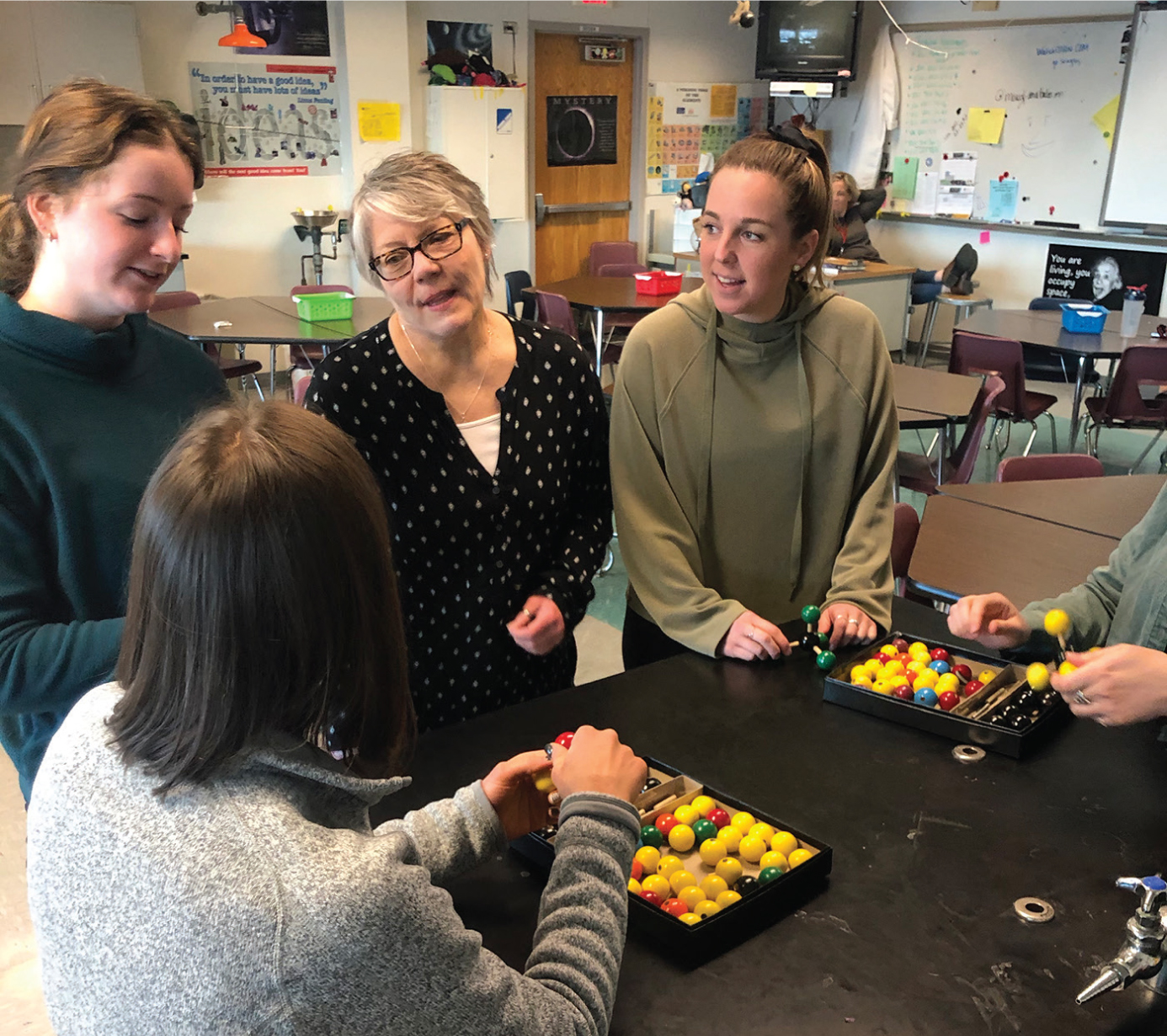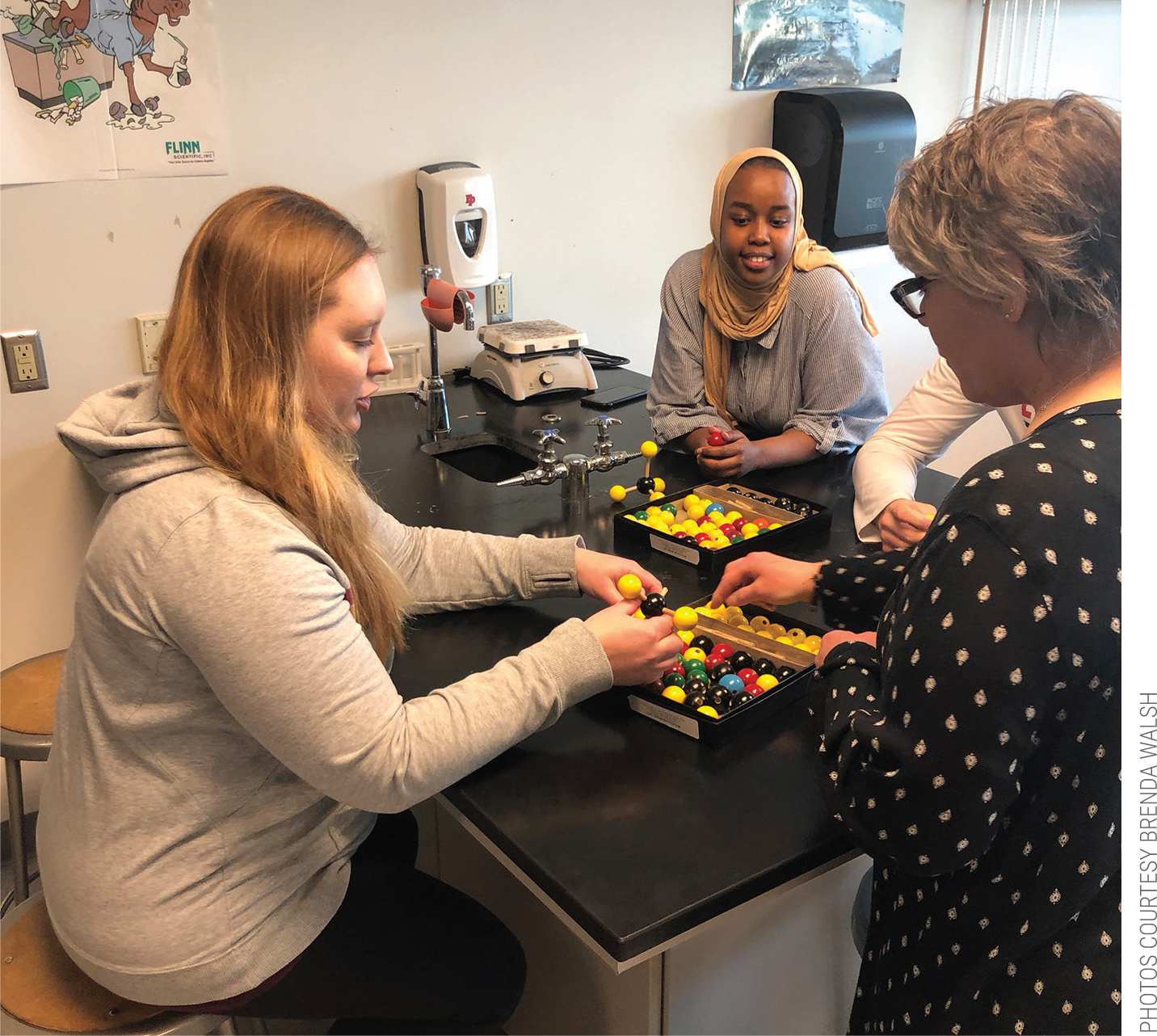Teacher Spotlight
Teacher Spotlight: Brenda Walsh
Describe your pathway to becoming a teacher? Why did you want to teach? Who influenced you along the way?
When I was thinking about what career to go into my senior year of high school, I said to my dad that I wanted to teach. He stated “Brenda, you are a woman in science, go do science,” so I did. My first job out of college was with the North Dakota State Department of Health. Every Wednesday I had to stop by the waste water treatment plant to get “fresh” waste for the Biochemical Oxygen Demand test!
I moved to Minnesota and worked for a nonprofit environmental company and the Minnesota Pollution Control Agency. I enjoyed both jobs but something was missing. I had my tarot cards read for fun (very scientific!) and the reader said that she saw me surrounded by a lot of children and I would make a lot of money.

I knew I wanted to be in the classroom and just took a short detour. I started in middle school and loved it but moved to high school teaching.
I have been so lucky to work with wonderful teachers and other school staff along the way. The biggest impact on my teaching career has been my involvement in professional communities; my NSTA family has helped shape who I am as a teacher.
Describe your school and classes. What do you teach? What kind of school do you teach in?
I teach Chemistry at Eden Prairie High School in Eden Prairie, a suburb of Minneapolis. Our current enrollment is about 3,000 students in 9th–12th grades.
Chemistry (or physics) is required to graduate from high school in Minnesota. Years ago, students in chemistry were typically headed to a four-year college. Now we have science students who may choose the military, a trade school, or are uncertain of what they would like to do.
My classes include students who love science and students who are not there yet. I have strong academic students and others who struggle with the typical school structure. Some are English language learners, some are special needs students, some come from diverse socioeconomic statuses, and some face mental health situations.
What are some of the resources you use for ideas and inspiration?
I love the NSTA journals. I use Science and Children, Science Scope, and The Science Teacher. The NSTA Learning Center is a great way to find vetted material to use in the class. The forums and listservs keep me connected to other NSTA members in one big Professional Learning Community. I am also active on different social media platforms.
Being involved with NSTA has had the biggest impact because I get the opportunity to meet with teachers from all over the country. I started years ago on a committee and grew into other roles. Building a community of teachers of support is so important.
I am also a member of other professional organizations and use the resources offered by them.
Talk about your teaching methods. In what ways do you encourage innovative thinking in your classes? How do you keep everyone engaged?
My teaching methods are ever-changing to try to match with what is best for my students. One thing I have learned is to have some consistency in class so students know what to expect, but don’t rely on just one method.
My district has offered great training on authentic learning, blended learning, and the 4-Cs. Our chemistry team is always working on ways to incorporate authentic learning, and we structure our learning and teaching so that students are responsible learners.
Being in a larger school has given me the opportunity to teach the way that is best for me, by teaming. As a team we decide how to approach our curriculum, what changes to make, what to add and what to let go. This year we have been working on creating more authentic learning in the classroom with questioning.
I love when students work together to put their learning and thoughts together with each other. At first, that was a bit scary wondering if they will “really” understand but it is powerful to really engage them on connecting with the information. I give a lot of formative assessments; typically, digital on our Learning Management System. We practice, we ask questions, and students learn the information using different modes.
What do you feel is the most important big-picture takeaway for your students? If nothing else, what one thing do you want them to learn?
I want students to realize that science isn’t about being able to convert from moles to grams or being able to predict products but about being able to think, analyze, and synthesize information.
It is important for them to be able to understand the information that they are presented with; to be able to determine what resources are providing the most accurate information; and to have the ability to help others understand that information.
The biggest takeaway that I want students to learn is to practice kindness and empathy for everyone and to be good thinkers and make educated decisions.
Describe a time a student impacted your life.
One of the most impactful student conversations that I had was with a student that I had in a credit recovery course in science. She was assigned to the course first for physical science (our 9th grade course) and then for biology (our 10th grade course).

It became quickly apparent that she was a student that had great academic potential, so I gave her “the speech” about using her full potential to prepare for college. She said, “There is no reason to try to graduate from high school because my parents are illegal, and I will not have the money to go to college.” Her answer hit me like a ton of bricks. Prior to that I had an understanding of the differences in my classroom, but she made it real for me. Getting to know more about the students helps us comprehend why they do what they do.
What strategies do you use to help struggling students?
Building trust is one of the most important things for reaching a struggling student. For some students it takes a long time to build that trust, but it is worth it once it happens.
Students struggle for so many different reasons. My students know that my door is open before and after school and during my prep to stop by for help. I always tell them that five minutes of one-on-one is very effective. When you can get them to come in for support you also get the time to get to know more about them too. The most important thing is for students to know that I care and want the best for them.
The love of the science is why I started teaching, but the students are the reason that I stay. I am a teacher of people; chemistry is what I teach them. And the one bright spot that I have seen in the COVID-19 pandemic is the overwhelming support that teachers are giving to each other during this time. Yay for our teaching family!
And finally, my tag on my school email is “be like a proton, positive!”


